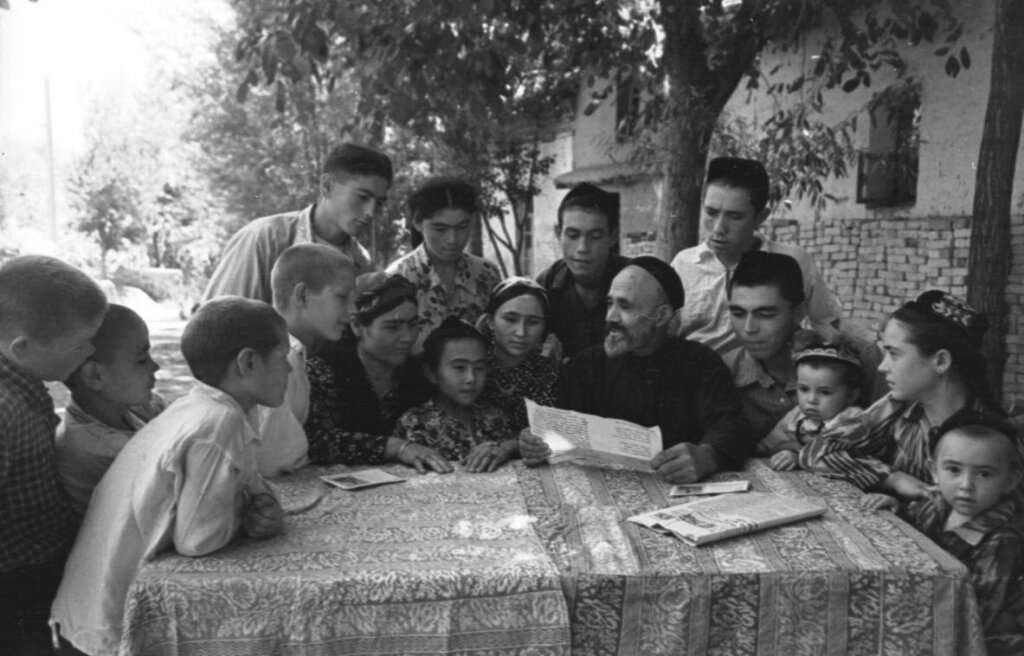Anna Vichkitova is an Assistant Professor in the School of Philological Studies at HSE University. Her research focuses on Soviet memory and postmemory.
Denis Karagodin, a resident of Tomsk, spent nearly a decade investigating the execution of his great-grandfather by the Soviet secret police. He created an open-access website to document the story, naming those complicit in the crime and recovering the case from archives. Karagodin is not a professional historian; what drives his work is a personal search for justice and truth. His project is part of a broader tendency in post-Soviet Russia to restore family narratives under erasure.
For many families, the Soviet legacy consists not of remembered trauma, but of the trauma of not knowing. It lies in fragments, gaps, silences, and absences that cannot be fully recovered. What defines post-Soviet family history is not what has been transmitted, like the inherited pain of Holocaust survivors’ descendants, but what has been missed.
As Marianne Hirsch has written, postmemory is the relationship of the “generation after” to a trauma they did not directly experience but inherited through stories and images. In Russia, postmemory often takes a different form: not a flood of inherited pain, but a haunting void. It does not bring acute, immediate suffering but a slow, aching kind. Memory work in this context requires not just restoring facts (they are often irretrievably lost), but acknowledging that something was removed and learning how to approach this inherited silence.
The sociologist Veronika Duprat-Kushtanina, in her study of Russian families from 2007 to 2009, found that many younger people knew almost nothing about their grandparents’ lives during the Stalin era. The silence was not incidental, but shaped by fear and stigma. Memory itself became dangerous. Duprat-Kushtanina writes that, in the course of her research, she “discovered blanks in the history of many families, mostly in the memories of the youngest generations. Some events, people, or even periods have been completely erased from the family stories passed down to them.”
These gaps in family history are not merely a side effect of the Soviet regime, but were integral to its project. Making the New (Soviet) Man required a deliberate break with religious tradition, family continuity, and moral inheritance. Yet we understand who we are by telling stories about where we came from. Without these narratives, the self becomes unanchored. Many post-Soviet Russians struggle today to make sense of their origins, which they must do to avoid a persistent sense of rootlessness.
Russian writers have found ways to respond to this condition of historical disorientation. Maria Stepanova’s novel In Memory of Memory (2017), for instance, is an attempt to tell a family story when there is nothing left but fragments. Stepanova’s book has complex poetics, which are best defined as autofiction. The narrator shares the author’s name and biography, but the use of fictional techniques distinguishes it from a conventional autobiography or memoir.
Having inherited, like other Russians, scattered memories with numerous voids, Stepanova wanted to fill them out. At the beginning of the book, she suggested that her family had largely remained uninvolved in significant historical events.
Everyone else’s ancestors had taken part in history, but mine seemed to have been mere lodgers in history’s house. None of them had fought or been repressed or executed (there were dark rumors of arrest and interrogation surrounding the other grandfather, but it seems the affair died down and he escaped persecution), none had lived under German occupation or fought in the battles of the century.
Trying to restore the historical context in which her family lived, Stepanova uses a method that is different from Karagodin’s. Because little on her relatives can be found in the official historical archives, Stepanova fills the gaps in her family narrative by visiting the sites where they lived and worked; reading their correspondence; examining their photos; and exploring the few artifacts that remain. Through this piecing together of past fragments into a unitary picture, she manages to re-create not her family history as such, but a methodology for writing a twentieth-century family story.
She concludes with two takeaways. First, it was impossible for anyone not to be affected by the devastating events in the twentieth century, especially in Russia. For example, Stepanova’s great-grandmother Sarra was a young revolutionary who was close to key figures in the establishment of the USSR, including the Bolshevik organizer Yakov Sverdlov (1885-1919). Although the revolution itself seems to have had no direct impact on her family, Stepanova’s caferul examination of the scattered facts and family memories on her great-great-grandfather Isaak Gurevich suggest that, by the twentieth century, he was among the Russian Empire’s most successful and well-known entrepreneurs. His agricultural machinery factory
was likely seized by the Bolsheviks, and, while his ultimate fate remains unclear, he most likely became a victim of revolutionary violence. Stepanova further claims that her family was unaffected by the Stalinist repressions of 1937-8, yet goes on to reveal that her grandfather, Kolya, was in danger of repression at one point.
The family archives also contain the letters of Lyodik, her grandfather’s cousin, who was reported missing in action on the Leningrad front of the Second World War. In addition, while the antisemitic campaigns of 1948 and 1953 supposedly did not visibly impact either her grandmother or great-grandmother—both were doctors—it turns out that, at that time, her grandmother, Lyolya, left her job because of it. Closer to the end of the book, Stepanova comes to the realization:
I thought I knew a few firm facts about my family:
No one died in the Stalinist purges
No one perished in the Holocaust
No one was murdered
No one was a murderer
Now this seemed doubtful, or even simply untrue.
Stepanova’s second takeaway is that writing a coherent narrative about what happened in the previous century appears to be impossible. The time of long-winded, nineteenth-century-style family sagas has passed. In their place appear narratives of a type that Osip Mandelstam predicted in his 1922 essay “The End of the Novel” (1922) and more conclusively demonstrated in the 1925 volume The Noise of Time. The former argues that the time of the classical—typically family—novel is over. The latter offers the novel a new way forward—as a series of occasional impressions interspersed with reflections on time, historical myth, and society. If Mandelstam’s narrative lacks coherence, it is because it seeks to reflect socio-historical discontinuity.
Stepanova, too, views the twentieth century as a series of humanitarian disasters that collectively render the present post-catastrophic. She considers those who lived through the trials of the twentieth century eyewitness-survivors, extending this category to include the second and third generations of descendants who preserve the postmemory of that time. These later generations inherited the post-catastrophic world and the fragmentary (post)memory of what happened before. Accordingly, post-catastrophic writing cannot be smooth and coherent, because it is not about writing down memory but about restoring, recovering, and reinventing it.
This triad of imperatives defines Stepanova’s writing. The method she proposes for dealing with inherited fragmented memories requires a deep personal engagement with the past. It compels one to attempt to (re)create and live through lost memories, drawing on creativity and sympathy with those involved. In a situation where no factual clues remain, only our imagination and compassion can fill these memorial voids, along with our ability to immerse ourselves in the past and imagine how it must have felt.
Olga Lavrent’eva uses a similar artistic device in her graphic novel Survilo (2019). The novel relates the life story of Lavrent’eva’s grandmother, Valentina Survilo, a survivor of the 1937 Stalinist purges and the Leningrad Blockade. Lavrent’eva combines her grandmother’s eyewitness testimony with archival research and her own imagination to depict the past.
Stepanova and Lavrent’eva’s techniques recall the work of Rafael Goldchain, specifically the “reconstructed family album” I Am My Family: Photographic Memories and Fictions (2008). Having inherited few photos of twentieth-century ancestors, who lived in different parts of the world and partly perished in the Holocaust, Goldchain recreates their images using his own body as material. After researching the historical context of the periods in which his relatives lived, he dresses up, applies makeup, and uses wigs to imagine the appearance of each late relative, both male and female.
The skeptical reader might ask: can family history be written in this way? In other words, can what is produced by these methods truly be called a family history at all? Given that Russian family history often exists in exclusively fragmented form, the answer ends up being both “yes” and “no.”
Yes, work like Stepanova and Lavrent’eva’s is definitely Soviet-era family memory expressed in a literary form. In fact, these memories have survived precisely because they were creatively restored—their traumatic nature and the risk of disappearance demanded such reconstruction. This creative restoration is not a byproduct but the very core and precondition of their survival.
No, this is not history or memory in the conventional sense of the term. It is not a coherent narrative about events of the Soviet past, nor is it entirely composed of firsthand accounts, testimonies, or memoirs. Relying solely on these types of narratives to study the Soviet past may not provide a reliable or complete view of that time. Instead, this type of hybrid methodology represents an attempt to give voice to those who were denied the opportunity to share their experiences. By transmitting these open-ended and sometimes incoherent narratives, the authors preserve historical memory while working to heal the wounds caused by inherited voids.



